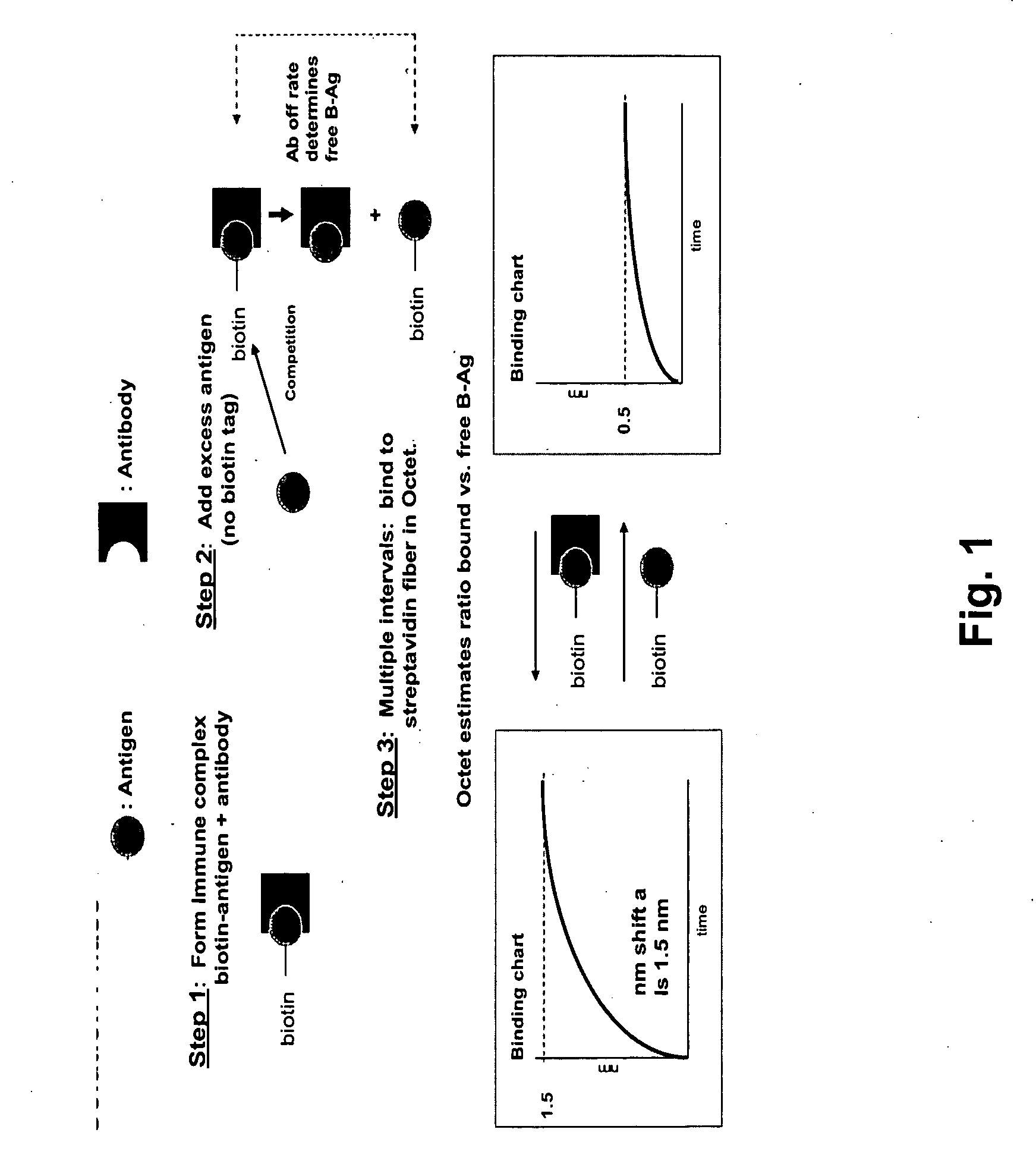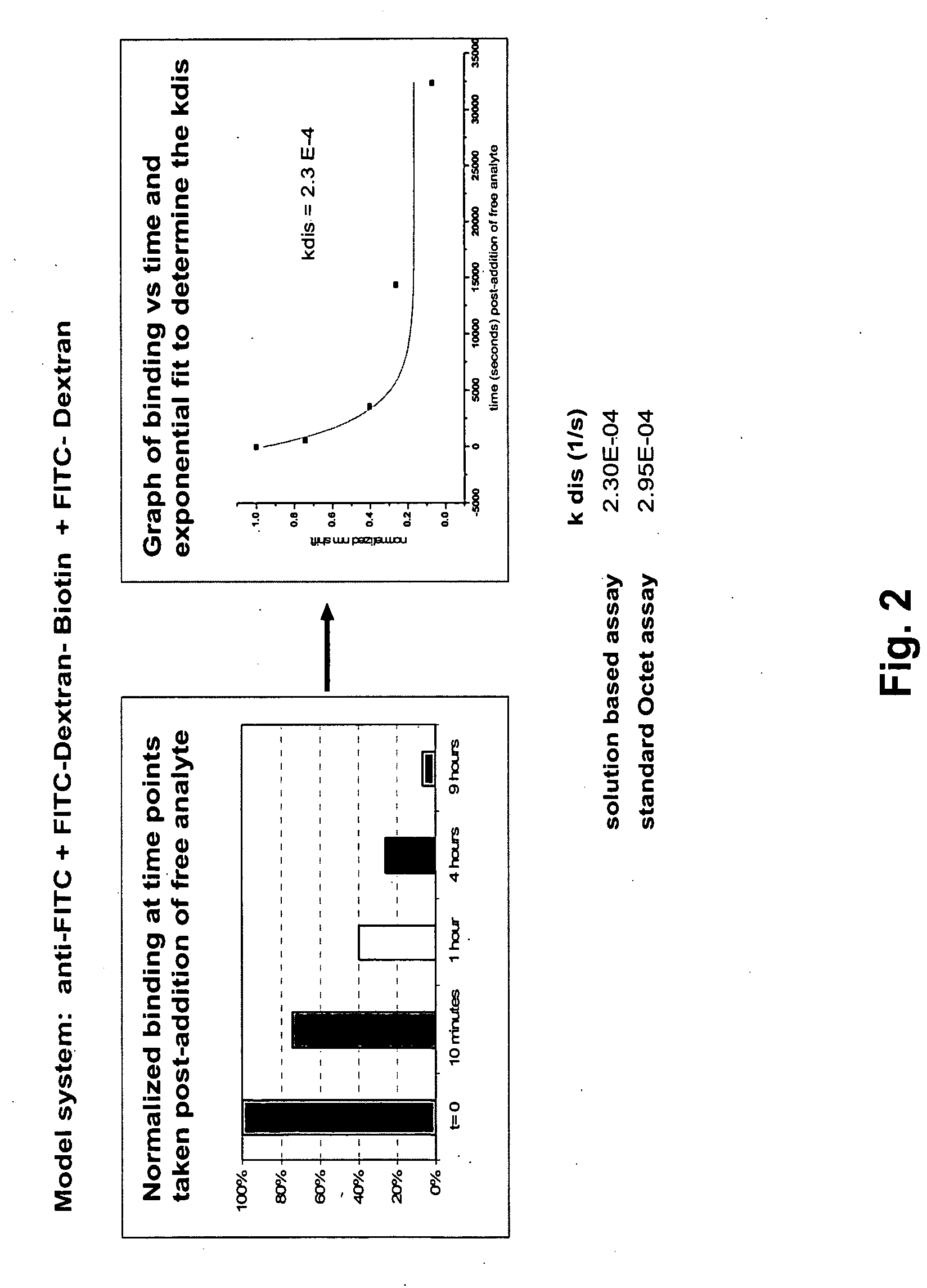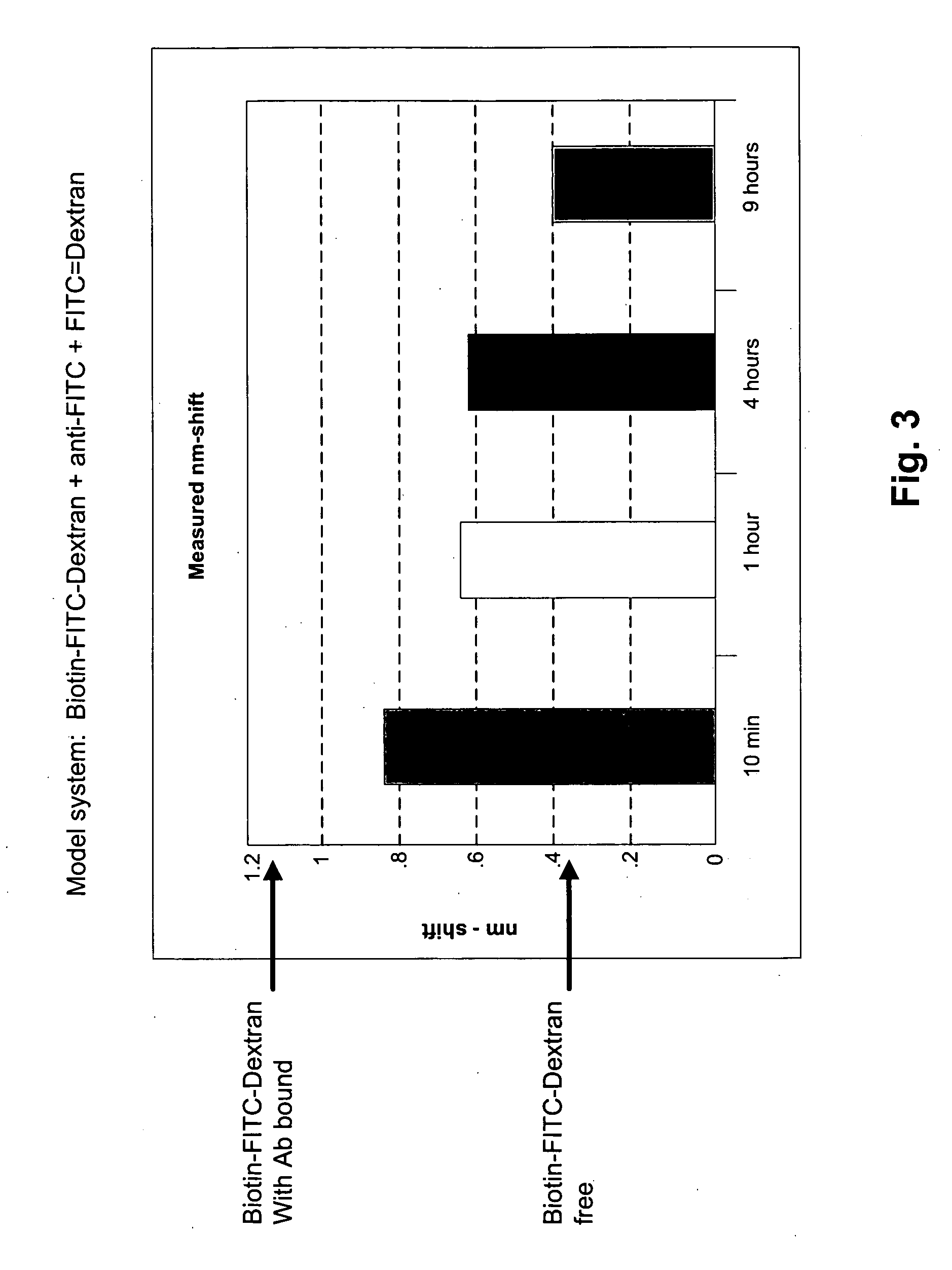Methods for characterizing molecular interactions
a molecular interaction and molecular structure technology, applied in the field of molecular interaction characterization methods, can solve the problems of limiting sample throughput, high affinity, and high affinity of high-affinity antibodies, and achieve the effects of improving the accuracy of dissociation rate constant estimation, reducing source of error, and conserving sample materials
- Summary
- Abstract
- Description
- Claims
- Application Information
AI Technical Summary
Benefits of technology
Problems solved by technology
Method used
Image
Examples
example 1
Overview of Method for Characterizing Antibody Antigen Reactions
[0042] A protocol for practicing the methods of the invention to characterize an antigen-antibody reaction is illustrated in FIG. 1. In step one, a sample is prepared by forming in a standard biological buffer such as phosphate buffered saline (PBS) or any other solution appropriate binding buffer or solution, an immune complex between an affinity-tagged (e.g., biotinylated) antigen (L*) and the antibody (R) whose dissociation rate constant is to be estimated. The tagged antigen and antibody concentrations preferably are selected such that at equilibrium, essentially all of the tagged antigen is bound by the antibody. In step two, a vast molar excess of untagged antigen (L) is added to set up a competition reaction with the biotin-antigen for the antibody binding sites. In this format since the biotin-antigen has been previously bound by the antibody, the immune complex must dissociate in order for the untagged antigen...
example 2
Characterization of Anti-FITC / FITC Reaction Using Glass Fiber Bio-layer Interferometry Sensor
[0043]FIG. 2 depicts Step 3 dissociation results (as diagrammed in FIG. 1) for an anti fluorescein / fluorescein-dextran binding pair. In this example, a glass fiber bio-layer interferomneter sensor is used to carry out the solid phase binding assay. The sensor and methods for making and using it are described in detail in co-owned U.S. patent application publication No. 20050254062, incorporated herein by reference in its entirety for all purposes. In this example, the fiber is derivatized with streptavidin which binds to the biotin tag present on the FITC-Dextran ligand. Using this type of sensor in the practice of the method offers an unexpected advantage. At the early stages of development of therapeutic antibodies the amount of antibody can be in limited supply. Accuracy of the dissociation rate estimate is improved by making repeated measurements sensor measurements of the same sample m...
example 3
Implementation of the Methods of the Invention on a BIAcore Device
[0089] 1. Sample setup is carried out in a manner similar to that described in Example 2, except that samples are prepared in a large batch (e.g., 10-20 mL). Each assay consumes one aliquot (e.g., on the order of 1-2 mL). In addition a solution control is used to correct for any refractive index changes due to protein concentration. For purposes of this working example, the ideal solution control consists of the unbiotinylated analyte plus antibody to give a similar total protein concentration as the samples.
[0090] 2. Streptavidin Biacore chips are used (Sensor chip SA, Biacore cat number BR-1000-32). As an alternative, an amine reactive CM5 chip (Biacore cat number BR-1006-68) can be used to immobilized streptavidin through a standard protocol.
[0091] 3. For each time point, a new Biacore chip is used. Each chip contains four flowcells that are used to assay the three samples described in Example 2 plus the solutio...
PUM
| Property | Measurement | Unit |
|---|---|---|
| time | aaaaa | aaaaa |
| diameters | aaaaa | aaaaa |
| temperature | aaaaa | aaaaa |
Abstract
Description
Claims
Application Information
 Login to View More
Login to View More - R&D
- Intellectual Property
- Life Sciences
- Materials
- Tech Scout
- Unparalleled Data Quality
- Higher Quality Content
- 60% Fewer Hallucinations
Browse by: Latest US Patents, China's latest patents, Technical Efficacy Thesaurus, Application Domain, Technology Topic, Popular Technical Reports.
© 2025 PatSnap. All rights reserved.Legal|Privacy policy|Modern Slavery Act Transparency Statement|Sitemap|About US| Contact US: help@patsnap.com



